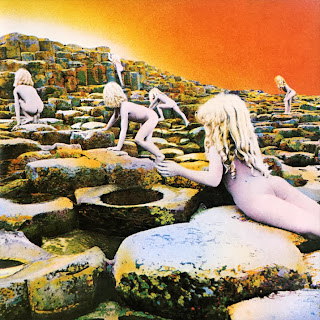Twenty Feet from Stardom is a documentary film which delves into the life of the
backing singer, and represents in some way a long overdue attempt to give
backup singers the recognition and attention they so richly deserve. The idea
for this Morgan Neville directed film came from the film’s producer Gil
Friesen, whose curiosity to find out more about the lives of backing singers
within the music industry influenced it’s making. The film focuses mainly on
prominent backing singers Darlene Love, Judith Hill, Merry Clayton, Lisa
Fischer, Tata Vega, Jo Lawry and Claudia Lennear among others, combining new
interviews with the singers themselves, as well as recent and archival footage,
and interviews with some of the acts they have performed with including Sting,
Mick Jagger and Stevie Wonder.
Twenty Feet from Stardom offers a fascinating insight into the singing lives of these
amazingly talented people in what is a role within music which is seemingly
confined to the shadows. These are the people whose names we don’t really know,
but whose voices have appeared on hundreds of notable recordings at various
times over the last fifty years. Many of the predominantly women in this film
have arguably more musical talent than the artists they have performed for, or
at least equally so, while they would walk all over some of the pop artists who
call themselves singers these days. The purity of some of the voices on display
in the film beggars belief, leading me to think as to why many of them could
not successfully make the walk out of the shadows and into the spotlight as a
solo artist.
The sad undercurrent
to these singer’s stories is that many of them had aspirations to make it as
solo artists. Some of them did end up at least attempting the move from backup
singer to solo artist, moves which they could not, in the end, sustain for long
within the cut-throat nature of the music industry. Most of the women featured
in this film ended up returning to singing backup, while one in particular
Claudia Lennear ended up quitting singing all together to become a Spanish
teacher. As a film, I guess it conjures up both a triumphant and heartbreaking
story, triumphant in that these women had great success touring and recording
with some great musicians, but equally heartbreaking in that they could not
carve out their own careers as solo singers.
One of the singers whose story is
featured in the film and who suffered from both triumph and heartbreak was
Darlene Love, who started singing as a backup vocalist on Phil Spector produced
recordings in the 1960s. She thought she had made it in 1964 when she sang lead
on the Spector record “He’s a Rebel”, but Spector cut her off at the knees in
deciding to release “He’s a Rebel” under the Crystals name without crediting
Love. The girl group went on to tour and promote the number one hit, miming to
the original recording with Love left on the sidelines to ponder what could
have been. This shattered her confidence and at one stage she even quit the
music industry completely during the 1970s whilst ending up cleaning houses to
make ends meet. Love returned to singing in the 1980s and has subsequently had
a taste of the success she richly deserved, carving her own successful solo
career, whilst also continuing to sing backup for other artists. She also ended
up getting recognised by being inducted into the Rock and Roll Hall of Fame in
2011.
Twenty Feet from Stardom is a very intimate look into the lives of some incredible
singers who soldiered on through highs and lows to forge successful careers
singing backup to some of the biggest names in popular music. It is also an
informative look into some of the wider issues within the music industry
including issues of gender, appearance, power, and the struggle for singers to
make it. This film is really quite a beautiful take on a very much overlooked
area in popular music and is a must see for any music fan, those interested in
singing or singers, as well as those who like a good documentary.
A
- Sam













